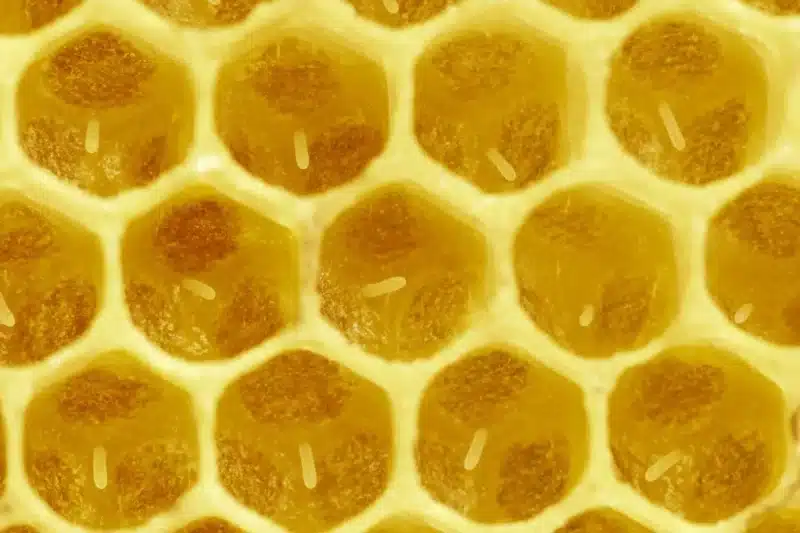A bee egg is 1/1000th the size of the eventual adult bee. It may surprise you that all the eggs a queen lays in beeswax comb cells are NOT the same size. Younger-aged queens, not surprisingly, lay more robust, larger eggs than older-aged queens. Two-year old queens lay eggs that weigh 1/3rd less. And eggs from older-aged queens are less likely to survive. The mortality rate of eggs increases as queens age – from 3.5% to 8.9% by the time the queen is 2-years of age. Eggs of three year-old queens likewise have a higher mortality.
Continuing studies by Oleg Rueppell, now at the University of Alberta and Dave Tarpy from North Carolina State and various students have shown that different queen stocks consistently lay eggs of different sizes in response to both genetic and environmental factors. Although not yet determined does egg mortality become higher in the fall months when spotty brood patterns become more apparent? Hygienic bee stock is responsible for some of the fall brood mortality but higher egg mortality could also be an explanation.
Another somewhat surprising factor in egg mortality is a social factor. Queens heading smaller colonies tend to lay larger eggs – 15% larger in fact – than queens in larger, more populus colonies. The larger eggs have more metabolites, the chemicals used in energy production and growth. As colony size changes so too does egg size as queens apparently have the ability to determine their colony size. Queens will reduce egg size as their colony grows in population. Have you observed that eggs laid by queens in nucs are likely to be larger eggs? For the most part we cannot tell the difference.
Despite being larger in size initially, the good news is that emerged adult workers are essentially the same size regardless of egg size. The nurse-age bees are capable of making up the differences for egg size.
On the topic of egg size, an earlier study on egg size has caught the attention of others. Hao Wei and colleagues in China (Jiangxi Agricultural University, Nanchang) found that confined queens laid larger eggs in larger cells set up for queen rearing. If we confine our selected queen stock does that mean her eggs will always be larger? Would larger eggs mean larger queens? The study suggests queens can adjust egg size when beekeepers modify egg-laying conditions. It will be interesting to see if this study of egg size can be duplicate. As member of panel of Pollinator Protection we approved as study by Olav Rueppel and students on this very topic. finding holds with further research.
For a discussion on egg sizing I direct you to the regular monthly column by Jay Evans, lead scientist of the USDA Bee Lab in Beltsville MD, recently recognized as an AAAS fellow (American Association for the Advancement of Science) in recognition of his scientific contributions and leadership. Dr Evans summarizes the topic of egg sizing in his Found in Translation in his August column of Bee Culture Magazine. He includes references to Hao Wei and Ruppell/Tarpy publications.

